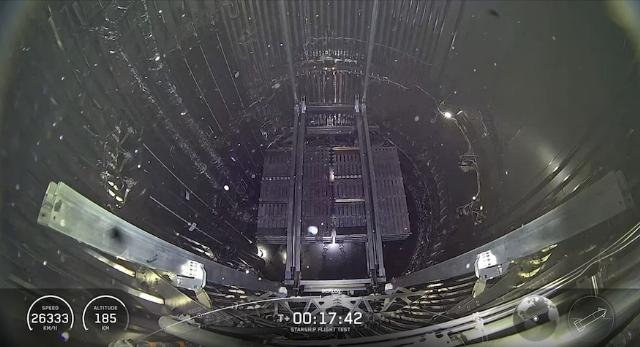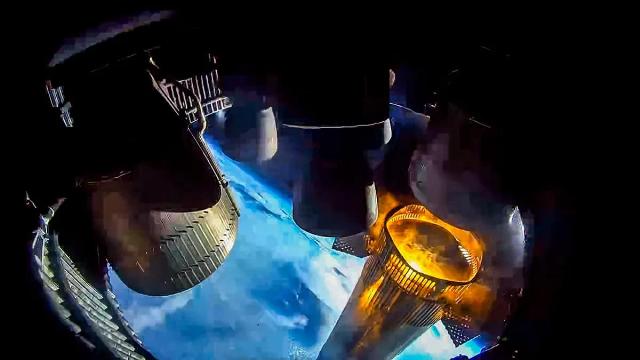Unlike in 2024, all four flights of the new space transport system in 2025 were unsuccessful. But now Elon Musk's company believes that it has reliably identified the causes of the latest accident, and is counting on a successful flight. The first human landing on the moon in the 21st century depends on how right she is.
The most powerful regularly flown rocket in Earth's history could deliver only a few hundred kilograms of payload to the Moon on a landing module with a total mass of 15-17 tons (the lunar module of the Apollo program). In contrast, the lander from SpaceX for a flight to the Moon must have a payload of 200 tons, that is, several hundred times more. Accordingly, the energy capabilities of such a system should be hundreds of times higher than those of the transport system from von Braun's Saturn V rocket, the Apollo spacecraft, and the lunar modules of the 1960s and 1970s. On the one hand, it radically expands the possibilities of exploring an Earth satellite. On the other hand, it means unprecedented R&D in terms of volume and complexity during the development of Starship.
In 2024, they were successful (each subsequent launch achieved more than the previous one), but in 2025, everything turned out differently. The second stage of the system, which is also called Starship, regularly exploded during the launch stages, during which it flew without explosions last year. To make matters worse, the reasons for what was happening were unclear.
SpaceX has posted a summary of the reasons for what happened on its website, and it's unexpectedly simpler than many industry observers expected. The company's engineers claim that the cause of the explosions was not engine problems, but defects in the supercharging system of the rocket fuel tanks of the second stage of the Starship.
The boost system in rockets serves to maintain a relatively constant overpressure in the tanks. Without overpressure, fuel will not flow normally into Raptor liquid rocket engines. That is, with a non-working boost, during acceleration, maneuvers, or in zero gravity, the pressure at the engine inlet can change dramatically, leading to fuel leakage from the fuel lines going to the engine or from the engine itself. Cavitation is also possible, that is, the formation of gas bubbles in methane and oxygen supplied to the engine in liquid form. Such bubbles can lead to the breakdown of a number of components of the motor system.
Conventional rockets from the dawn of the space age used nitrogen (R-7 and its current descendants, which Russia uses to launch people into space) or helium (for hydrogen-fueled rockets) to boost their tanks. However, this means having a separate container with an inert gas, which complicates the design and reduces the available amount of fuel. Therefore, Starship uses a fundamentally different scheme: evaporation of part of the fuel (methane and oxygen) to gas, which is used to pressurize tanks with the liquid part of the fuel. This scheme has a bottleneck: in some cases, reverse condensation of the pressurized gas into the liquid is possible with a loss of pressure in the tanks and subsequent problems up to cavitation.
SpaceX considered the cause of the latest failure to be a malfunction of the boost system element of the main fuel tank located in the front (upper) part of the main methane tank of the Starship. The element responsible for feeding the gasified part of the fuel back into the tanks failed a few minutes after launch. The sensors then detected a pressure drop in the main methane tank and an increase in pressure in the ship's nose cone above the tank. Most likely, the gasified part of the fuel went into the space above the tank instead of the tank itself, since the gas supply element stopped passing gas in the right direction.

Liquid methane droplets in the Starship payload bay during the ninth test flight in May. Normally, fuel, of course, should not fly this way.
Image source: SpaceX
Starship tried to compensate for the pressure drop in the main tank and continue operating the engines according to the program. But the leak from the nose cone and the increasing leakage of fuel from the fuel lines "overloaded" the Starship attitude control system. When this happened, the ship's automation activated the discharge of all remaining fuel into space to avoid a powerful explosion during the fall. That was the end of the test flight.
It is claimed that the company was able to reproduce this error in ground conditions. After that, they changed the design of the boost system so as to avoid insufficient injection of boost gases into the fuel tank. The investigation fully satisfied the American authorities, that is, the Federal Aviation Administration (FAA). As a result, it gave SpaceX permission for the tenth launch of its spacecraft with a window dated August 24, 2025.
The objectives of the flight will be another attempt to launch a simulated Starship payload into space and monitor the condition of both stages of the system as they descend. The second stage will be returned close to the launch site so that it can be examined in detail after touching the surface. This is important for bringing the thermal protection of the second stage to working condition. The return of the first stage of the Super Heavy B16 to the Mechazilla tower is not planned, it will be gently lowered into the bay. To do this, the first stage of the B16 will have to hover at near-zero speed over the water before landing. In addition, there will be an attempt to unload eight large-scale Starlink V3 mockups in space.

